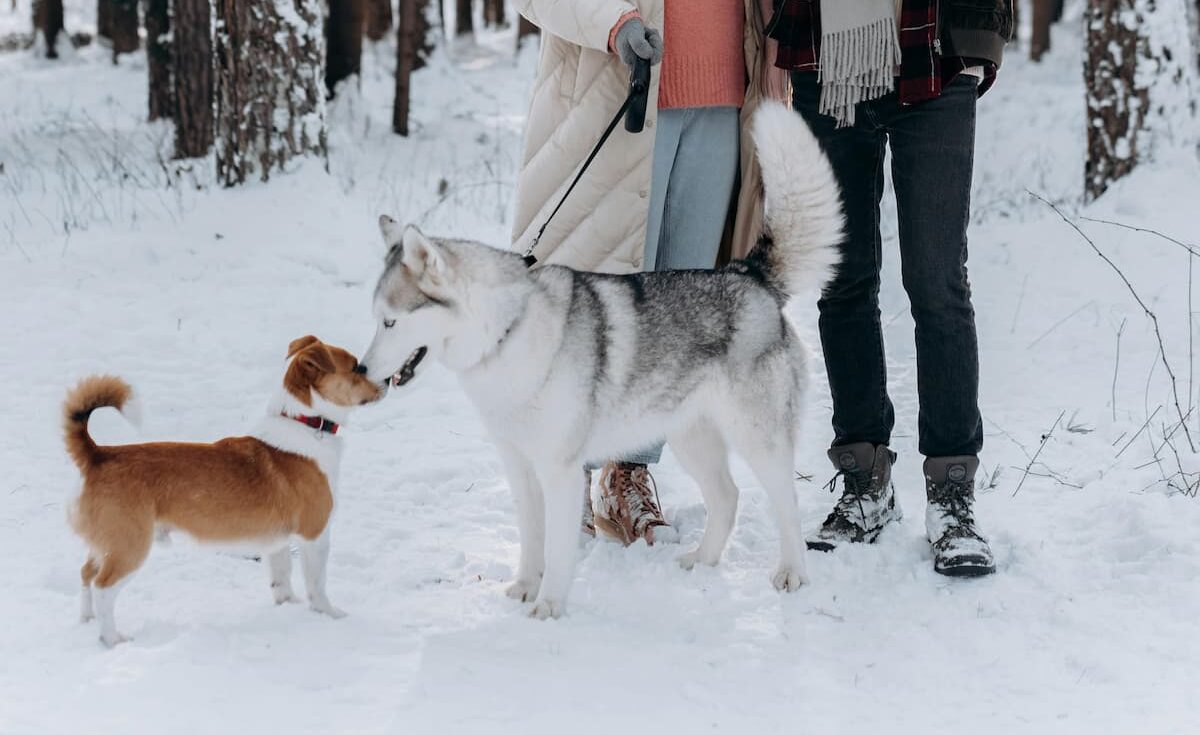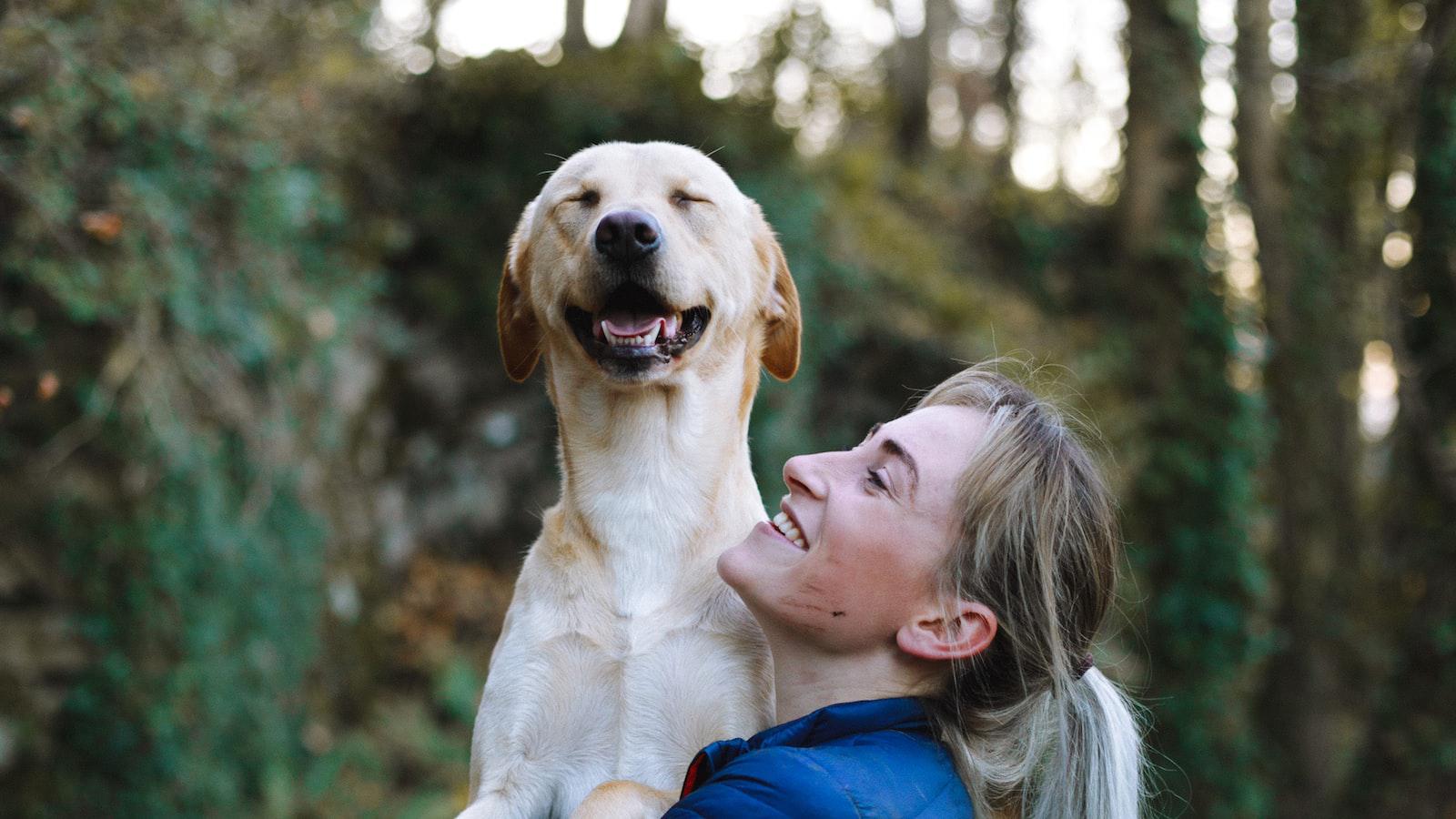Have you always wondered: Why do dogs knot when mating?
Read on to learn more about the fascinating origins of this behavior.
Why Do Dogs Knot When Mating?
Dog mating can be a fascinating yet puzzling experience for many pet owners.
One aspect of this natural behavior that often leaves people scratching their heads is the phenomenon known as “knotting.”
What exactly IS knotting and why do dogs knot when mating?
Here are some scientific answers:
The Anatomy of Mating
Firstly, it’s important to understand that knotting, scientifically referred to as “copulatory tie,” occurs primarily in male dogs.
During mating, the male’s erect penis swells significantly, creating a firm and almost bulbous structure.
This phenomenon serves a crucial purpose, as the bulbus glandis, which is located at the base of the erect penis, expands and locks inside the female’s vagina.
Once the bulbus glandis is securely locked inside the female, the process of knotting begins.
The purpose of this peculiar knot-like structure is to help facilitate successful reproduction.
By maintaining a tight connection, the knot ensures that the male’s semen is efficiently deposited deep inside the female’s reproductive tract.
It also prevents the semen from leaking out and increases the chances of fertilization and successful conception.
The Role of Hormones
When a male dog mates with a female, his body releases a surge of hormones, particularly oxytocin and vasopressin.
These hormones play a crucial role in the bonding and reproductive processes.
Oxytocin, often referred to as the “love hormone,” is responsible for stimulating contractions in the smooth muscles of the reproductive tract, including the muscles in the male’s penis.
This contraction, combined with a specialized knot-like structure at the base of the penis, allows the male to remain physically attached to the female during mating.
Meanwhile, vasopressin helps regulate various physiological functions related to reproductive behavior and bonding.
The Complex Interplay of Neurology
As mating progresses, the release of hormones interacts with the neurological system, creating a complex interplay of signals that contribute to the knotting phenomenon.
Stimulation of the male’s genitals activates sensory receptors, sending signals to the brain.
This triggers the release of neurotransmitters, such as serotonin and dopamine, which are associated with pleasure and reward.
These neurotransmitters not only heighten the male’s overall sexual experience but also contribute to the formation of a stronger bond between the mating pair.
Additionally, the pressures applied during knotting can stimulate the release of endorphins, natural pain-relieving substances that may further enhance the experience.
How Knotting Benefits Dog Reproduction
Knotting may seem strange at first, but it has evolutionary advantages.
While the exact evolutionary advantage of knotting is still a subject of study, some theories suggest it serves important functions such as these:
1. Enhanced Sperm Delivery: When a male dog’s penis becomes lodged within the female’s vaginal canal, it allows for longer and more direct contact with the cervix.
This prolonged connection ensures efficient delivery of sperm directly into the reproductive tract, increasing the chances of successful fertilization.
2. Preventing Rival Sperm: Another significant benefit of knotting lies in its ability to prevent rival males from mating with the female during this crucial time.
By forming a knot, the male dog essentially creates a physical barrier that seals off the female’s reproductive tract, deterring other suitors.
This mechanism offers a clear advantage in ensuring that the male’s genetic material has the best opportunity to fertilize the female’s eggs.
3. Inducing Ovulation: Surprisingly, knotting has also been linked to ovulation induction in female dogs.
The pressure exerted on the vagina during the tie triggers the release of luteinizing hormone, which stimulates the ovaries to ovulate.
By synchronizing ovulation with copulation, dogs maximize the chances of successful conception and increase reproductive efficiency.
4. Strengthening pair-bonds: The bonding and pleasure associated with knotting may strengthen the pair-bond between the mating dogs, increasing the likelihood of cooperative parenting and offspring survival.
This intriguing behavior is a result of millions of years of evolution, shaping the reproductive strategies of canines.
Recognizing and understanding these evolutionary advantages shed light on the intriguing world of dog reproduction and the intricate mechanisms that have allowed dogs to thrive as a species for thousands of years.
Ensuring Safe and Comfortable Mating Experiences for Your Pets
It’s crucial for dog owners to understand that the knotting behavior is normal and serves a biological purpose.
However, it’s essential to ensure that both dogs are comfortable and safe during the mating process as the prolonged tie can lead to complications, such as injuries or infections if not handled with care.
Here are a few tips to help create a safe and comfortable environment for your pets during their mating experiences:
Provide a quiet and private space: Dogs tend to be more relaxed when mating in a familiar and calm environment.
Find a quiet location where they can have privacy without distractions.
Observe their behavior: Pay attention to your dogs’ body language during mating.
If any signs of discomfort, aggression, or distress are displayed, it’s crucial to intervene and separate them immediately.
Gently separating them by holding their hindquarters can help release the knot without causing harm.
Consult a veterinarian: Before allowing your dogs to mate, consult with a veterinarian to ensure that they are both healthy and fit for breeding.
Regular health check-ups for your dogs, especially the females, can identify any potential issues early on and prevent complications related to knotting.
The vet can also provide guidance on timing, nutrition, and any potential risks or complications to be aware of.
Remember, understanding the biology behind dog mating and taking the necessary precautions will help ensure safe and comfortable experiences for your furry friends.
FAQ
Q: What exactly does it mean when dogs knot during mating?
A: When dogs knot, it refers to the occurrence of the male’s bulbus glandis, an erectile tissue structure, swelling inside the female’s vagina during copulation.
This creates a temporary physical connection between the male and female that locks them together.
Q: Why do dogs knot?
A: The primary reason behind this behavior is an evolutionary advantage.
Knotting helps ensure successful mating and increases the chances of fertilization.\
When the male’s bulbus glandis enlarges, it acts as a “plug” inside the female, preventing the semen from leaking out.
This prolongs the time the sperm have to reach the eggs, maximizing the likelihood of reproduction.
Q: How long does the knotting last?
A: The duration of knotting can vary from a few minutes to as long as 20–30 minutes.
It largely depends on the breed, individual dogs involved, and their reproductive health.
Q: Is knotting painful for the dogs involved?
A: While some initial discomfort might occur during the process of knotting, it is generally not painful for dogs.
In fact, they are biologically designed for this behavior, and it is a natural part of their reproductive system.
Q: Can dogs separate themselves while knotting?
A: Dogs cannot voluntarily separate themselves while knotting. The knot formation triggers muscles to contract, creating an involuntary lock between the male and female. This lock typically remains until the swelling subsides.
Q: Are all dogs capable of knotting?
A: Knotting is most commonly observed in certain breeds, particularly those with larger penises relative to the size of the female’s vagina.
Breeds like Bulldogs, Boxers, and Retrievers are known to knot more frequently.
Q: Can dogs knot with other animals or objects?
A: No, dogs cannot knot with other animals or objects.
This behavior is exclusive to canine reproduction and requires the specific anatomy of male and female dogs to occur.
Q: Is knotting necessary for successful breeding?
A: While knotting can enhance the chances of successful breeding, it is not always required.
Dogs can still reproduce without the formation of a knot, but knotting may improve the likelihood of fertilization.
Q: Can knotting cause any health issues?
A: Generally, knotting does not lead to health problems for dogs.
However, in some rare cases, complications like vaginal or rectal prolapse can occur if the knot remains for an excessive amount of time.
If you suspect any issues, consulting a veterinarian is always recommended.
Understanding the incredible biology and purpose behind the knotting behavior during dog mating provides us with a deeper appreciation of the intricate mechanisms involved in the reproductive lives of our furry friends.
Reflecting on the Closing Chapter
Throughout history, dogs have evolved alongside humans, developing their own rituals and behaviors.
From fetching sticks to sniffing out hidden treasures, they’ve always managed to surprise and captivate us.
And when it comes to mating, well, let’s just say that Mother Nature has her own surprises in store for our furry friends.
Science shows that knotting during mating is actually a natural mechanism that serves a purpose.
By temporarily preventing the male from withdrawing, knotting ensures that the semen is fully transferred into the female’s reproductive tract, maximizing the chances of successful fertilization.
On average, it takes about 5 to 20 minutes for the knot to naturally loosen up, allowing the male dog to disengage.
While knotting is a natural occurrence during dog mating, it’s important to remember that not all dogs are capable of this behavior.
It primarily occurs in certain breeds and is dependent on various factors such as size, anatomy, and genetics.
So, don’t be alarmed if your adorable four-legged buddy doesn’t engage in this peculiar practice – they are still perfectly normal!
So, the next time you stumble upon two dogs “tied” together during their intimate moment, don’t panic or jump to conclusions – it’s just nature taking its course.
Appreciate the fascinating biology that has allowed dogs to thrive and adapt throughout history.












